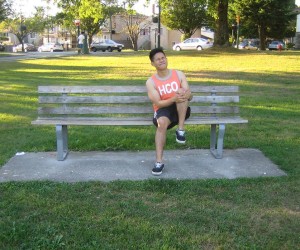It is important to note that knee braces basically support the ligaments in the knee by controlling certain movements while at the same time providing protection against excessive or abnormal knee movement on injured knees.
The knee braces are available in different sizes and shapes as well as serving various functions. You can easily find basic knee braces at sporting stores and pharmacies. There are also customized versions that are tailored to fit the knee of the individual. These knee braces are grouped into three categories such as functional, prophylactic and rehabilitative. You can learn more about these braces by enrolling in a first aid class today.
Patellofemoral brace
There are several injuries that occur at the patellofemoral joint such as quadriceps tendonitis, chondromalacia, patella dislocations and patella subluxation. Always bear in mind that these injuries are instigated once the knee cap or patella tracks interiorly and rubs against the surface lining of the femoral groove.
When it comes to a patellofemoral brace, it is designed to allow proper patellar tracking during the flexion and extension of the knee. The brace has a dough-nut shaped hole that supports the knee cap and an elevated ridge. Take note that the brace is structured to push the knee cap outwards while the knee is moved in order to allow the joint to properly track.

Hinge knee brace
The main purpose of the hinge brace is to provide protection against excessive left or right motion which can cause sprains on either side of the ligaments in the knee. Always remember that a hinge brace is built with sturdy bars that are aligned inside or outside the knee that serves as secondary stabilizers. In some versions, there is a built-in locking mechanism on the brace that prevents the knee from bending or straightening excessively. Hinge braces should be ordered from a doctor to ensure proper fit.
Neoprene sleeve
A neoprene sleeve is considered as the basic knee brace. The neoprene can provide minimal support of the knee and it has the main objective of retaining warmth around the knee which helps minimize the pain from chronic inflammation injuries. Always bear in mind that a neoprene sleeve functions as a compression sleeve to prevent and minimize the swelling of the knee. These braces are available in most sporting goods or health supply stores.
Knee immobilizer
It is important to note that knee immobilizers are utilized right after an individual sustained a ligamentous injury or surgery. The immobilizer extends from the upper thigh down to the calf. This is built with a contoured plate behind the knee that goes from the thigh up to the calf. Additionally, it is also built with plates on every side of the knee for protecting the collateral ligaments.
ACL brace
Always bear in mind that the anterior cruciate ligament helps prevent the lower leg from sliding in a forward manner on the femur as well as extreme rotation at the knee. Most of the ACL injuries are usually non-contact and instigated by planting the feet and twisting motion.
An ACL brace is structured to prevent excess rotation and the forward translation of the tibia. In most cases, these braces are utilized on athletes after surgery. These braces are customized to fit the individual due to its intricate nature. The measurement of the leg length and girth of the individual are taken to ensure proper fit.
